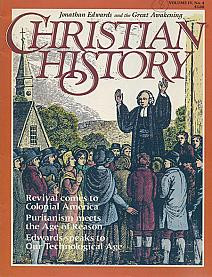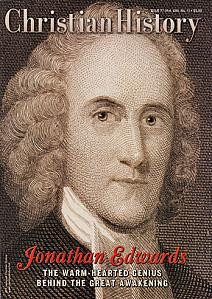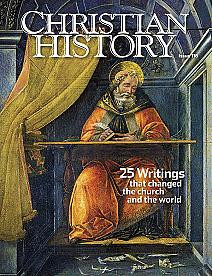Jonathan Edwards Preached a Hellfire Sermon that Became Famous
HAD YOU BEEN PRESENT, you might have squirmed under the sermon that Jonathan Edwards preached on this day, 8 July 1741. His hearers in the little village of Enfield, Massachusetts (now in Connecticut), did more than squirm.
It was not that Edwards howled them into hell. On the contrary, his dry delivery, uttered as matter-of-factly as a scientific report, increased the certitude of his terrible warnings:
All you that never passed under a great change of heart by the mighty power of the Spirit of God upon your souls; all that were never born again, and made new creatures, and raised from being dead in sin...you are thus in the hands of an angry God;’tis nothing but his mere pleasure that keeps you from being this moment swallowed up in everlasting destruction...The wicked are now walking over the pit of hell on a rotten covering . . . .
The residents of Enfield were terrified by the words of their guest speaker. Some wept so loudly that Edwards had to ask them to hush so he could finish preaching “Sinners in the Hands of an Angry God.” It is the only one of his works most people have heard of today.
Edwards believed what he preached and was deeply affected by his own religious meditations—not all of which focused on hell; he also wrote much on the beauty of God. Sometimes a ride through the woods would fill him with joy. At other times he locked himself in his study, groaning before God because of his sins. Even his bubbly and beloved wife, Sarah Pierpont, could not soothe him when he was in this condition.
A close friend of evangelist George Whitefield, Edwards was involved with two revivals of religion in New England in which people behaved in extraordinary ways under the conviction of sin—some crying out, some fainting, two or three even committing suicide, convinced they were damned. When traditional clergymen complained, Edwards wrote books defending these manifestations.
His other writings were extensive. His curiosity ranged from an essay on spiders to a thoughtful analysis of freedom of the will. These books made him the best-known American scholar in Europe.
In his later days, Edwards’s congregation expelled him. He insisted that individuals must satisfy a mild examination to establish their religious conversion before being admitted to Communion, something they would not accept. After serving as a missionary to the Housatonic Indians, Edwards accepted the presidency of the College of New Jersey (Princeton) but died of smallpox a few months later.
—Dan Graves
----- ------ ------
Jonathan Edwards is such a significant figure in American faith and thought that Christian History has devoted two issues to him: Christian History #8, Jonathan Edwards and the Great Awakening
and Christian History #77, Jonathan Edwards
Vision Video also has told the story of his happy marriage in An Uncommon Union: The Life And Love Of Sarah And Jonathan Edwards
One of Edwards's writings is considered in "Not concerning the heart but the life" in Christian History #116, 25 Writings
Subscribe to Christian History and never miss an issue.








